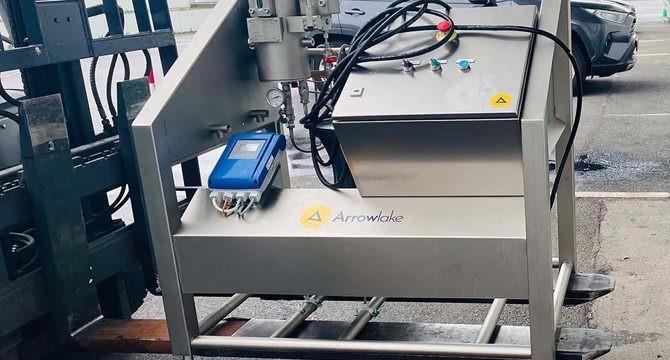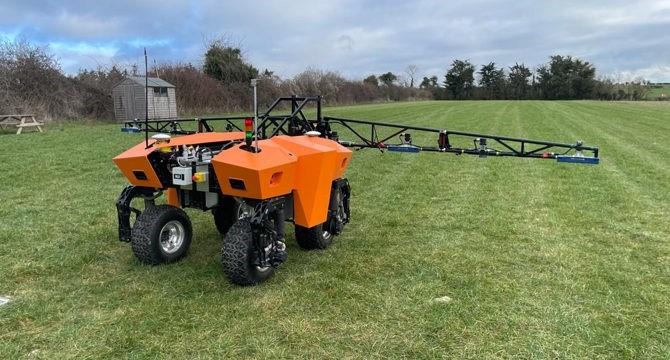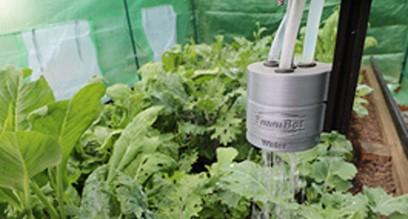As the world's oldest industry, you could be forgiven for thinking that agriculture had been perfected by now. But despite the picturesque scenes of fields stretching for miles under blue skies, in reality, the agriculture industry is grappling with a unique set of challenges that are as diverse as the crops they cultivate. From labour shortages to environmental concerns, the agriculture industry is a complex terrain where resource scarcity, technological adoption, and changing consumer preferences intertwine. Farmers, stakeholders and innovators are turning to digital manufacturing to overcome the obstacles they face daily. In this blog, we explore ways digital manufacturing is helping to tackle new issues and age-old concerns that impact efficiency, sustainability, and the future of our food supply.
Faster Food
Hangry - bad-tempered or irritable as a result of hunger… We’ve all been there. Now, imagine a hangry customer base; that is what the agriculture industry faces all year round. There is unprecedented demand for food, and with a rapidly increasing population, that isn’t going to change anytime soon. There is significant pressure on the agriculture industry to provide more than ever, quicker than ever.
Design for Manufacturability (DFM) analysis is a strategy that optimises product design to enhance manufacturing efficiency and reduce lead times. Digital Manufacturing platforms allow DFM feedback to be presented almost instantly, giving agriculture manufacturers guidance on their products in real-time, speeding up the iteration process and overall product development time. The approach ensures that agriculture products are easier to manufacture and assemble by simplifying production processes, streamlining component design, minimising rework, and selecting suitable materials. DFM analysis encourages collaborative design, involving manufacturing experts earlier in the prototyping and testing phase to facilitate iterative improvements and foster faster production setup. Ultimately, DFM analysis in agriculture leads to quicker iterations, reduced lead times, and improved responsiveness to market demands.

When designing their ozone purification system, The FLO3W®, Arrow Lake, was able to make a rapid decision about the feasibility of their part by using Protolabs’ automated solution to get an immediate initial analysis of manufacturability and cost-effectiveness. Read the case study to find out how they did it.
Sustainability on the menu
There is growing pressure on the agriculture industry to adopt sustainable and environmentally friendly practices to ensure the long-term viability of farming practices while minimising negative impacts on the environment, communities, and future generations. The pressure comes from changing consumer preferences, with a customer base increasingly concerned about the environmental and ethical aspects of their food choices. As consumers increasingly seek products aligned with their values, farmers diversify their offerings, employ precision technologies to optimise resource use and explore regenerative practices that foster soil health and biodiversity. This has led to shifts in demand for certain products, requiring the agriculture industry to adapt to changing consumer preferences.
According to Innovate UK, agriculture and the food chain accounts for approximately 20% of UK CO2 equivalent emissions, and the race is on to reduce that figure. Agriculture manufacturers can use digital manufacturing technologies to lightweight their products to increase efficiencies and reduce carbon emissions. Using the DFM analysis mentioned in the previous section, the knowledge of expert manufacturers within digital manufacturers like here at Protolabs, and state-of-the-art manufacturing technologies, agriculture products can be made much more intelligently and significantly lighter. Engineers can virtually prototype and refine products using CAD simulation software, ensuring they meet structural and functional requirements while shedding unnecessary weight. Techniques like topology optimisation employ mathematical algorithms to create intricately efficient material distributions, enabling the production of lightweight yet strong structures. Additive manufacturing, or 3D printing, introduces the ability to construct complex geometries and lattice patterns, reducing overall weight without compromising performance. By experimenting with new lightweight materials in machinery, such as tractors, harvesters and even drones, farmers can enhance their operational efficiency and reduce fuel consumption. By aiding material selection, supporting rapid iteration, and facilitating collaborative teamwork, digital manufacturing empowers the creation of products advancing environmental sustainability and resource efficiency.

Small Robot Company developed the 21st-century answer to the 21st-century problem in agriculture, producing more food from less land. Their Tom V4 Per Plant farming makes autonomous robotic farming a reality, meaning more food and less waste at a cheaper cost than ever before. With sustainability as the driving force of their product, they needed to minimise the entire system weight so that ground pressure was reduced, so they partnered with Protolabs to 3D Print two different parts for their latest agri-robot.
From feast to famine
In agriculture, the ebbs and flows of nature have long been a challenge for farmers. But recently, another force has been causing ripples through the fields: supply chain volatility. Just like a perfectly timed rainfall, a smoothly functioning supply chain is essential to bring our food from farm to table. However, the past few years have seen disruptions that have left their mark on the agriculture industry. From extreme weather events that delay planting and harvesting to unexpected transportation bottlenecks and global trade uncertainties, farmers are finding themselves navigating an increasingly unpredictable landscape. Moreover, market access for agricultural products has become unpredictable, with export and import restrictions causing imbalances in supply and demand. These disruptions ripple through the entire value chain, affecting food processors, distributors, and retailers, ultimately influencing consumer access to a stable and diverse food supply. Farmers are increasingly adopting agile production strategies, diversifying suppliers, and exploring localised sourcing options to mitigate the effects of supply chain volatility.
So, how exactly does digital manufacturing work its magic? First off, it brings agility to the table. By employing sophisticated tools like computer-aided design (CAD) and simulation software, farmers can create virtual prototypes of equipment and components. This means they can test various scenarios before even planting a seed, helping to anticipate potential disruptions and plan accordingly. No more last-minute surprises from Mother Nature! But that's not all - digital manufacturing also thrives on customisation. It tailors solutions to fit the specific needs of each farm, allowing for the creation of lighter, stronger, and more efficient equipment. Imagine machinery that adapts seamlessly to changing conditions, optimising its performance while keeping supply chain hiccups at bay. Another game-changer is additive manufacturing, also known as 3D printing. This technique brings unparalleled flexibility to the supply chain. Not only does swift and localised production become feasible, reducing dependence on distant suppliers, but if a crucial part of a tractor breaks down, a farmer could simply print a replacement on-site. No more waiting for spare parts to arrive, reducing downtime and ensuring the farm runs smoothly. Digital manufacturing doesn't just paper over the cracks; it is beginning to address the root causes of supply chain volatility. By embracing digital manufacturing, the agriculture sector gains the tools to navigate uncertain times more confidently while advancing sustainability and minimising waste through data-driven and adaptive approaches.

FarmBot, the world’s first open-source, CNC small-scale farming machine, allows individuals to create and manage a garden using a laptop, tablet, or phone to oversee the automated planting, watering, and monitoring of crops. Protolabs’ product development experts helped FarmBot transition from 3D-printed components to more repeatable and cost-effective injection-moulded parts.